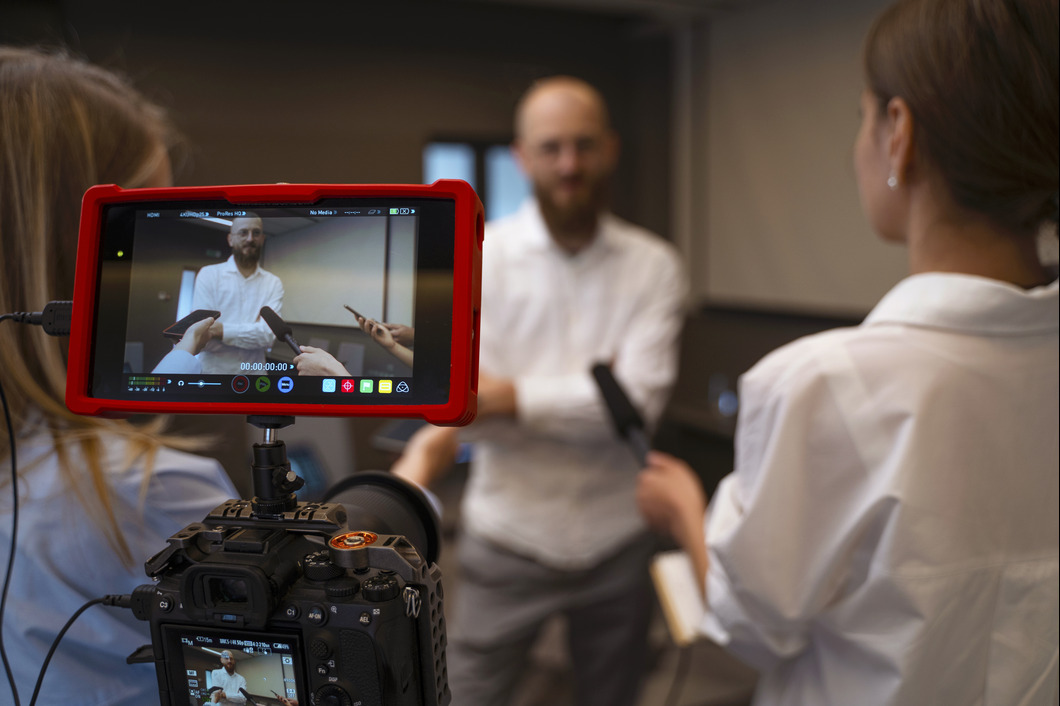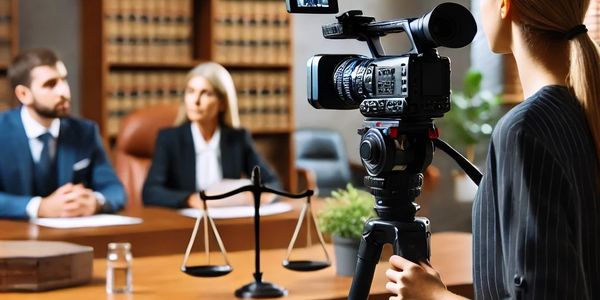Why Lawful Videography Is Vital for Accurate Court Recordings
The duty of lawful videography in court room settings can not be overstated, as it serves as a vital tool for preserving the honesty of court documents. The effects of incorporating legal videography right into conventional court room methods raise vital inquiries concerning its more comprehensive effect on the legal system.
Value of Visual Evidence
In the world of legal procedures, the relevance of aesthetic evidence can not be overemphasized. Visual proof offers as an effective device in developing facts, supporting statements, and enhancing the general quality of a case. This kind of proof, which includes photographs, videos, and layouts, can give a substantial context that verbal descriptions typically do not have, consequently offering juries and judges a clearer understanding of the situations surrounding an instance.
In addition, visual evidence help in the retention of details. Human cognition is inherently aesthetic, and people are more probable to keep in mind and understand details provided in an aesthetic style. In the court room, this can be crucial, as compelling visual evidence can sway opinions and enhance the story provided by legal agents.
In addition, the usage of aesthetic proof can minimize misunderstandings and uncertainties that commonly arise from spoken exchanges. By offering a straight representation of occasions, visual proof assists to remove subjective analyses and cultivates a more objective evaluation of the truths. Subsequently, the assimilation of aesthetic evidence into legal process not only strengthens the honesty of the judicial process yet likewise enhances the likelihood of achieving a just result.
Recording Non-Verbal Cues
Utilizing sophisticated videography strategies can considerably improve the capture of non-verbal signs throughout lawful proceedings. Non-verbal communication, consisting of face expressions, body movement, and eye call, plays a critical duty in communicating feelings and objectives that may not be clearly stated in spoken testimony. legal videography. Lawful videography employs high-def video cameras and strategic angles to make sure that these subtle cues are videotaped with clarity and precision
The capability to examine non-verbal behavior can give beneficial context to statements made during court sessions. A witness's hesitation or self-confidence can be analyzed through their stance or motions, potentially influencing the jury's assumption of reputation. Moreover, making use of close-up shots can help focus on a speaker's expressions, permitting for a much more nuanced understanding of the statement.
In addition, integrating multiple video camera angles can create an extensive sight of interactions, highlighting dynamics in between events included. This diverse technique not only boosts the precision of the court record however additionally help in maintaining the stability of the judicial process - legal videography. Ultimately, capturing non-verbal hints with legal videography promotes a richer, a lot more complete depiction of court room procedures

Enhancing Statement Integrity
The integrity of testament can be significantly strengthened via making use of top quality lawful videography. Video clip recordings serve as an objective tool that captures not just the spoken words of witnesses but additionally the nuances of their distribution, including tone, pacing, and psychological expressiveness. This multifaceted documents offers a more clear understanding of the witness's reputation and intents, which can be crucial in lawful process.
In addition, legal videography lessens the potential for misconceptions that may develop from created records alone. When jurors can observe a witness's temperament and body language together with their testament, they are much better geared up to analyze the authenticity and dependability of the proof presented. This aesthetic context can strengthen the testimonial story, making it more compelling and credible.
In addition, the presence of a video recording can hinder potential disparities in statement. Witnesses might be more careful in their declarations when they recognize they are being videotaped, leading to more precise and sincere accounts. On the whole, top quality legal videography improves the integrity of testament, making sure that the court has accessibility to a full and genuine depiction of the realities as communicated by the witnesses.
Supporting Appeals and Reviews
Legal videography plays an important role in sustaining allures and testimonials by supplying a comprehensive visual document of court process. This aesthetic documentation records not only the spoken words of witnesses and lawyers however additionally the nuances of body movement, intonation, and courtroom characteristics. Such components can be web link critical in recognizing the context of testimonies and disagreements provided.
In the appellate process, where the emphasis is on errors of legislation and procedural justness, a video record can act as an important tool for appellate courts. It enables judges to review the original test context, making sure that decisions are based upon a total understanding of the procedures. The capability to aesthetically examine the behavior of witnesses or the communications between events can disclose insights that written transcripts may her explanation neglect.

Furthermore, lawful videography can help in making clear uncertainties in testaments or procedural judgments, consequently reinforcing the basis for an allure. By providing a reliable, objective account of what transpired in court, legal videography not only supports the integrity of the legal process but additionally empowers all events involved to make educated choices regarding their instances.
Simplifying Courtroom Processes
Enhancing court room effectiveness, lawful videography simplifies processes by offering instant accessibility to aesthetic records of procedures. This innovation permits courts, attorneys, and juries to revisit vital testament and proof, making sure that all celebrations have a clear understanding of the situation. By capturing the subtleties of verbal and non-verbal interaction, videography improves the record, making it simpler to comprehend the context and weight of testaments.

Furthermore, video recordings can facilitate remote engagement in hearings, enabling greater flexibility in scheduling and engagement, which is specifically beneficial in intricate situations entailing several stakeholders.
Conclusion
To conclude, legal videography plays an essential function in guaranteeing exact court recordings by offering essential aesthetic proof that captures both verbal and non-verbal interaction. This method boosts the dependability of testaments, supports appellate testimonials, and enhances court room processes. By fostering a detailed understanding of courtroom characteristics, legal videography inevitably contributes to extra equitable judicial results, enhancing the integrity Website of the lawful system and promoting educated decision-making.